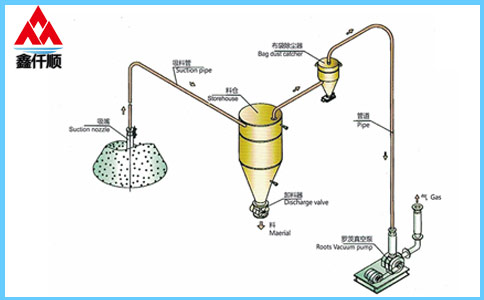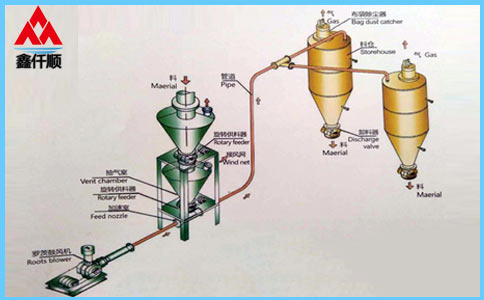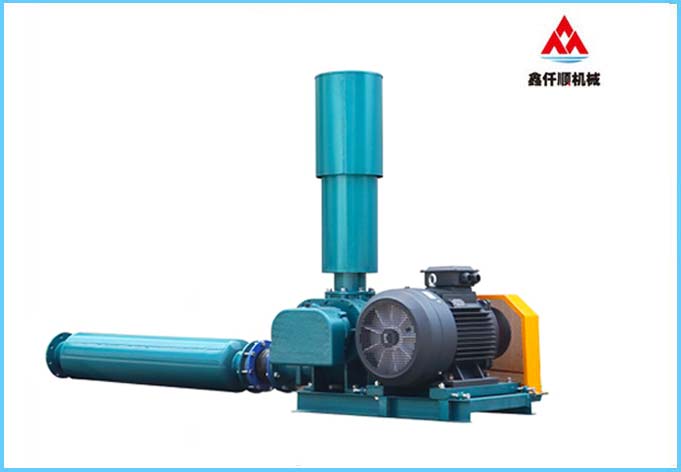Roots blower is a volumetric Roots blower, with impeller end face, front and rear end covers of Roots blower. The principle is a rotary compressor that uses two blade rotors to make relative movement in the cylinder to compress and transport gas. As it is a high-speed machine, the roots blower will vibrate, and the pulsation of its internal air will also increase the vibration of the blower, so the roots blower needs to be fixed on the ground during installation.
Check the fastening of each part and whether the locating pin is loose. There is no oil leakage inside the blower; There should be no scaling, rust and peeling in the body. Whether the group operates under conditions that do not meet the requirements, and pay attention to adding butter regularly. Sometimes the overload condition of the Roots blower will not be displayed immediately, so pay attention to the increasing trend of the air inlet and exhaust pressure, bearing temperature and motor current to determine whether the machine operates normally. Before disassembling the machine, measure the matching dimensions of the machine, make a record, and mark the parts to ensure that the original matching requirements are maintained after assembly.
The foundation of Roots blower is required to be horizontal and solid, and the foundation height is 200mm. Roots blower and air duct shall be connected by hose (flexible material and non combustible), the length shall not be less than 200mm, and the pipe diameter shall be the same as the inlet and outlet size of Roots blower. The hose shall be installed with appropriate tightness to ensure no distortion and deformation during system operation. The canvas hose installed at the suction end of Roots blower can be slightly tightened to prevent it from being sucked in during the operation of Roots blower and reduce the sectional size of the canvas hose. The steel support of Roots blower must be fixed on the concrete foundation, and a rubber damping pad must be added between the steel support of Roots blower and the foundation. All Roots blower and motor components are installed on the whole steel support, and the steel ground frame is installed on the damping pad on the top of the foundation. The damping pad is made of perforated rubber plate. The pipe diameter at the outlet of Roots blower can only be increased, but not decreased. The rear air outlet shall be equipped with an insect screen. When the wind is inclined upward, a rain cap must be added.
In order to ensure the smooth progress of daily work, we must carry out commissioning before using Roots blower. Many people do not know much about the commissioning of Roots blower. In fact, the commissioning of Roots blower can be divided into inching commissioning, no-load operation commissioning, full pressure commissioning and full system commissioning.
1. Roots blower, check whether there is oil leakage in the oil tank, if there is, repair it in time, and check whether the oil volume in the oil tank is within the normal range.
2. Check the internal conditions of Roots blower, check whether there are sundries in Roots blower, and clean them in time if there are any.
3. Check the integrity and smoothness of Roots blower impeller.
4. Check whether various spare parts of Roots blower are complete, such as pressure gauge, bolts, etc.
5. During the trial operation of Roots blower, it must be operated under no-load condition.
6. After commissioning, the roots blower must be installed correctly and firmly on the horizontal plane.
7. Test the noise value of Roots blower during the test run to ensure that the noise value of Roots blower is within the controllable range.
8. During the trial operation, it is necessary to record various operation indicators and make corresponding records.
I believe that after reading the above contents, you should also have an understanding of the problems that need to be noticed during the commissioning of Roots blower. I hope it will be helpful to you.
Text label: Roots blower
Link to this article: //wuhanzhcs.com/html/news/n02/670.htm










